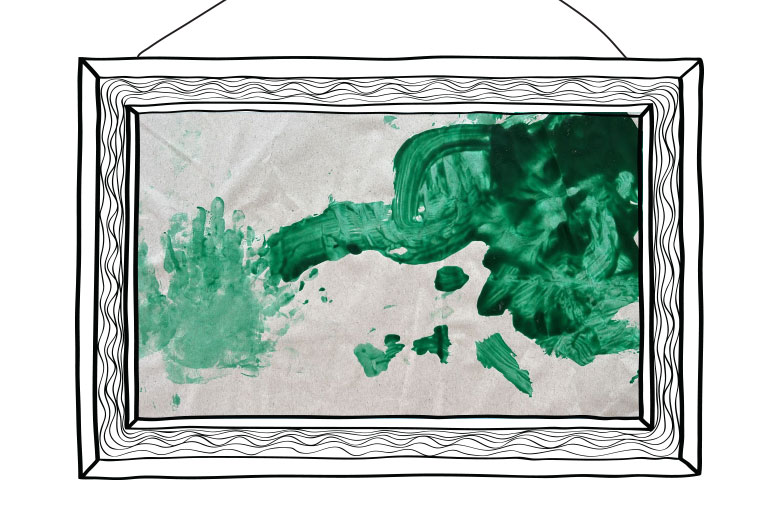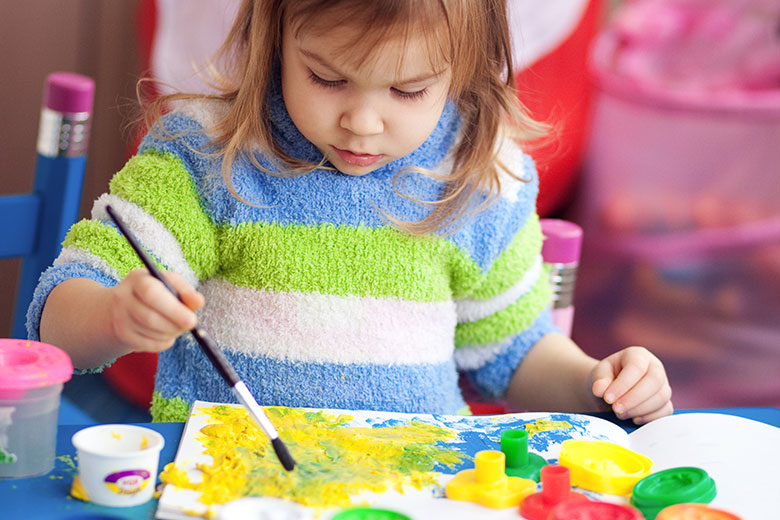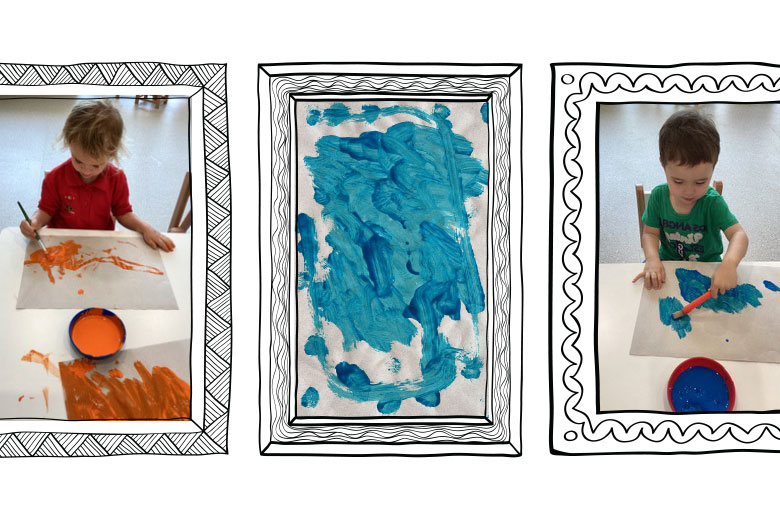There is a growing recognition of the value of creative work with early years children, with art not only fun and entertaining but also educational. Education UAE spoke to Sechni Jooma, a teacher at Ladybird Nursery Al Barsha, one of Dubai’s leading British nurseries for children aged between six months and four years, to get her professional take on giving youngsters the opportunity to become open and expressive.
Education UAE: Why is practicing art important for early learners?
Sechni Jooma: Art encourages creativity and imaginative thinking; it is a natural activity to support free play in children. The freedom to manipulate different materials in an organic and unstructured way allows for exploration and experimentation. Art gives children the ability to express themselves; they can communicate their own emotions, thoughts, and experiences through what they are creating. When you see art created by other children, you are seeing the world through their eyes. When you are creating your own piece of art you are letting others see what you see or feel.
Art allows children to practice a wide range of skills that are useful not only for life but also for learning. Art develops children’s fine motor skills, cognitive development, maths, and language skills. Free play or free expression is also good for overall health and wellbeing. Giving children a creative outlet can help relieve stress and work through things happening in their lives.
Art develops children’s fine motor skills, cognitive development, maths, and language skills

EdUAE: How does art impact early learner development?
Sechni: Art aids in physical development, it helps children develop fine motor skills and hand-eye coordination, by grasping pencils, crayons, chalk, and paintbrushes, and helps children to develop their fine motor muscles. This development will help children with writing, getting dressed, and other tasks that require controlled movements.
Art aids in cognitive development, as it helps children learn and practice skills such as ‘Patterning’ and ‘Cause and Effect’ (i.e., ‘If I push very hard with a crayon the colour is darker’). They can also practice critical thinking skills by making a mental plan or picture of what they intend to create and following through on their plan.
Art helps children develop their maths skills, as well as learning, creating, and beginning to understand concepts such as sizes, shapes, making comparisons, counting, and spatial reasoning. Art also supports the development of children’s language skills, which happens when they describe and share their artwork. You can encourage this development by actively listening and asking open-ended questions in return. It is also a great opportunity to learn new vocabulary with regard to their project (i.e., texture).
Art develops children’s emotions, giving them the chance to express their emotions and feelings. It provides them with a sense of achievement if they are happy with what they are doing and what they have created.

When you see art created by other children, you are seeing the world through their eyes
EdUAE: How important is it for their mental and emotional wellbeing?
Sechni: Free play or free expression is good for overall health and wellbeing. Giving children a creative outlet can help relieve stress and work through things happening in their lives – they can express their feelings and emotions through their artwork. It gives children a sense of achievement and independence when creating something they like and, importantly, what they have chosen. It makes them happy.
EdUAE: When is the right age to introduce art to early learners?
Sechni: You should introduce art to children from around six months to one year. Open-ended toddler art activities provide children with the opportunity to freely explore materials and processes.
EdUAE: How can parents reinforce the importance of art at home?
Sechni: Parents can create a workspace; select a spot in your home with readily available art materials to allow children to have a dedicated workspace of their own that they can go to whenever they feel like creating something.
Go shopping together for art materials. Let the children be involved in the process, as it is more likely that they will then be interested in creating something from what they have chosen. Talk about artwork with children. Take them to galleries or museums to foster their interest in art, read books about art or children doing art. Display their children’s artwork around the house. If they see that you are happy and proud of what they have created, it will encourage them to continue creating, which builds confidence. Encourage children to paint and express themselves freely.
Encourage children to paint and express themselves freely
Parents can sit down with their children and paint. Talk about what they are painting and how it makes them feel. Parents can also start an art activity and leave materials next to them for the child to use, as children often mimic what their parents do.

Seshni Jooma, is a qualified Cache 3 Early Years Educator who has been working for Ladybird for the last six years. Seshni, a mum of two children of her own, is currently also completing her Cache Level 5 Diploma in Leadership for Children and Young Peoples Services.
Ladybird Nursery Al Barsha
+971 58 829 4462





